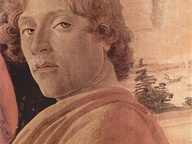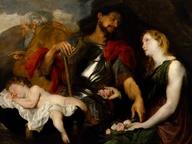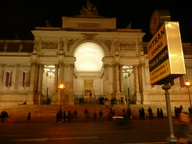Shepherd Boy
Piazzetta's unusual way of depicting a "Peasant Girl" and a "Shepherd Boy" is evidenced first of all by his choice of a transverse oval picture format. Only a partial view of the boy is given, and his face, which is aligned slightly rearwards, is partly covered by a large hat. In his frontal view of the sleeping girl, the artist underlined the intimate, lascivious character of the picture by giving her a low-cut dress.
Piazzetta's style is distinguished by clearly offset chiaroscuro, sound colour composition and vibrant flesh tones. The half-length paintings of the girl and boy are modelled on the half-length figures of Caravaggio. The artist was indebted to Crespi for the genre elements and the down-to-earth realism of the depictions as well as for its traditional rustic character. The erotic element was already to be found in 17th-century Dutch painting.
Two comparable companion pieces are to be found at the Museum of Fine Arts, Boston. Both pictures are dated to about 1720, other, similar works to the 20s of the 18th century. The paintings in Salzburg still exhibit the influence of Piazzetta's time in Bologna and can, therefore, be assumed to have been executed not much later than the examples mentioned above. Hence it would seem justifiable to date them to the early 20s.
COMMENTI
LE OPERE
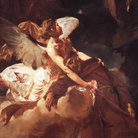 Estasi di san Francesco d'Assisi
Olio su tela
Estasi di san Francesco d'Assisi
Olio su tela
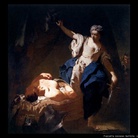 Giuditta e Oloferne
1748 | Olio su tela
Giuditta e Oloferne
1748 | Olio su tela
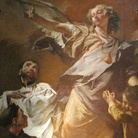 L’Arcangelo Raffaele e i Santi Antonio da Padova e Gaetano da Thiene
1726 | Olio su tela
L’Arcangelo Raffaele e i Santi Antonio da Padova e Gaetano da Thiene
1726 | Olio su tela
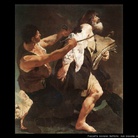 San Giacomo condotto al Martirio
1717 | Olio su tela
San Giacomo condotto al Martirio
1717 | Olio su tela
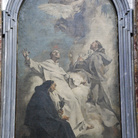 Visione dei Santi Ludovico Bertrando, Vincenzo Ferrer e Giacinto
1738 | Olio su tela
Visione dei Santi Ludovico Bertrando, Vincenzo Ferrer e Giacinto
1738 | Olio su tela
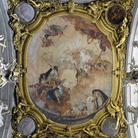 Gloria di San Domenico
1727 | Olio su tela
Gloria di San Domenico
1727 | Olio su tela
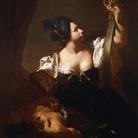 Giuditta e Oloferne
1715 | Olio su tela | 98 x 114 cm.
Giuditta e Oloferne
1715 | Olio su tela | 98 x 114 cm.
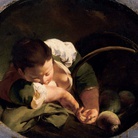 Giovane Contadina
Olio su tela | 82 x 66 cm.
Giovane Contadina
Olio su tela | 82 x 66 cm.
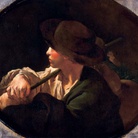 Pastorello
Olio su tela | 82 x 66 cm.
Pastorello
Olio su tela | 82 x 66 cm.
Map
Works in Italy
Works around the world
